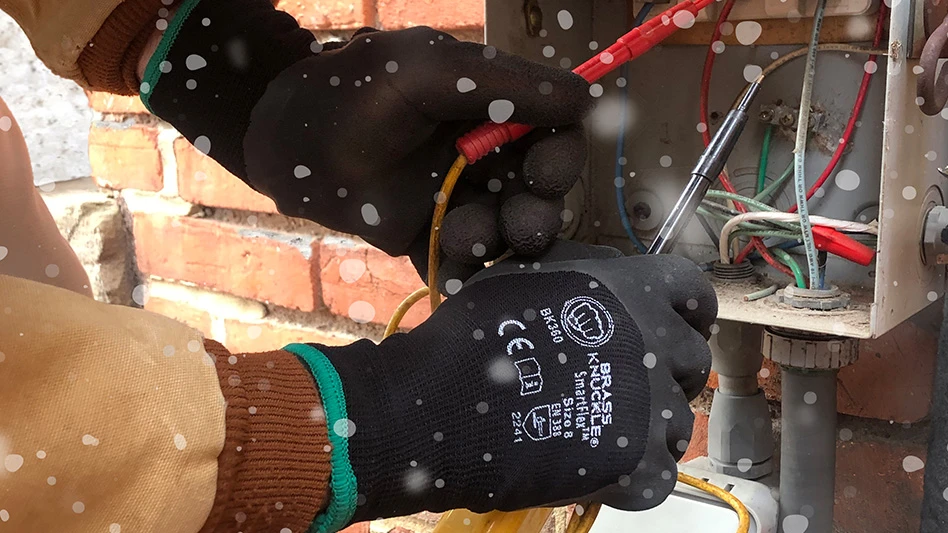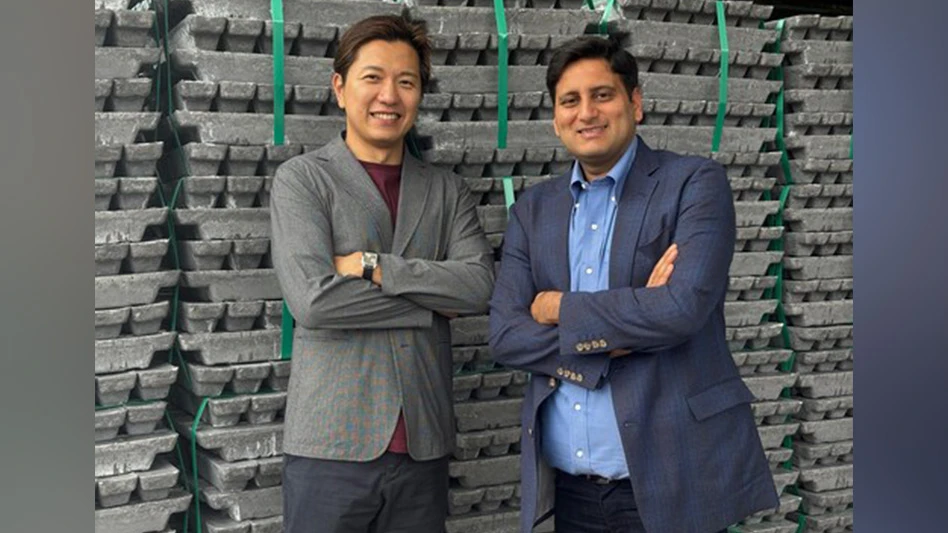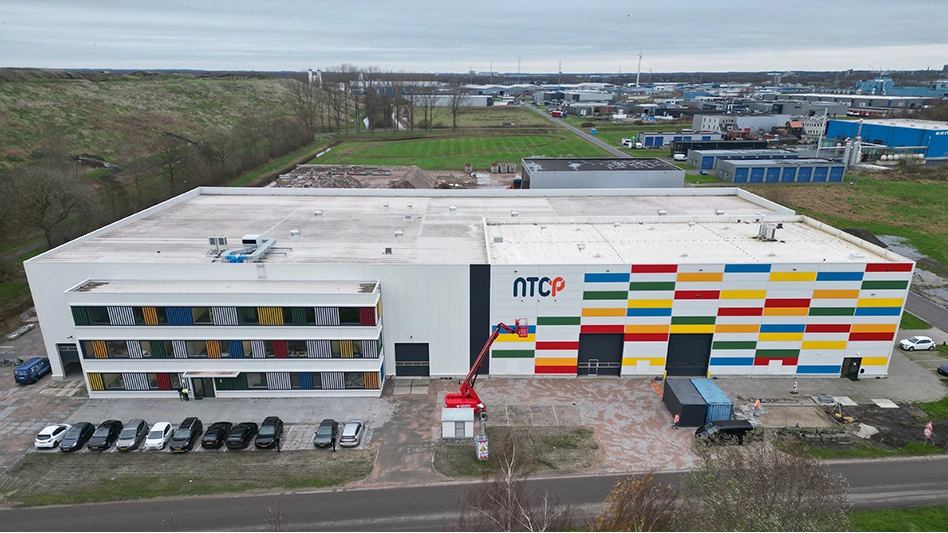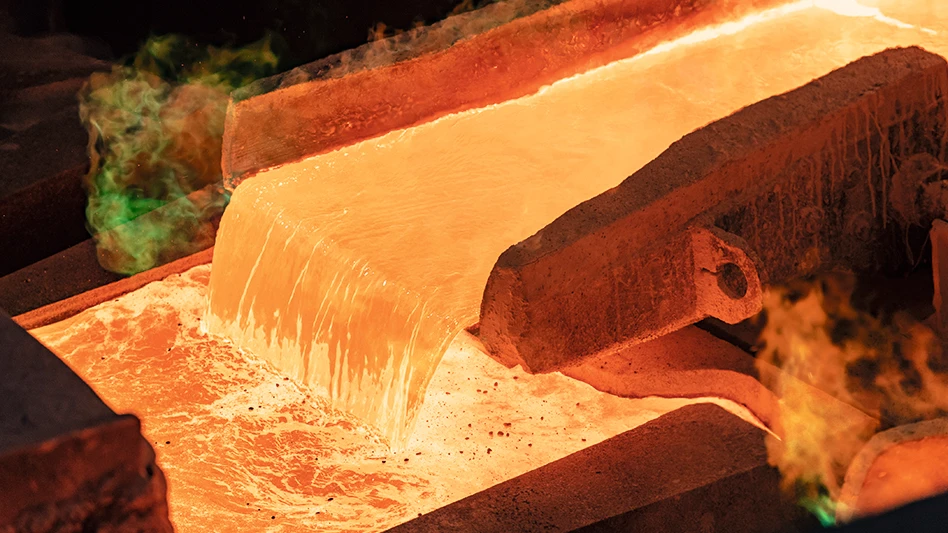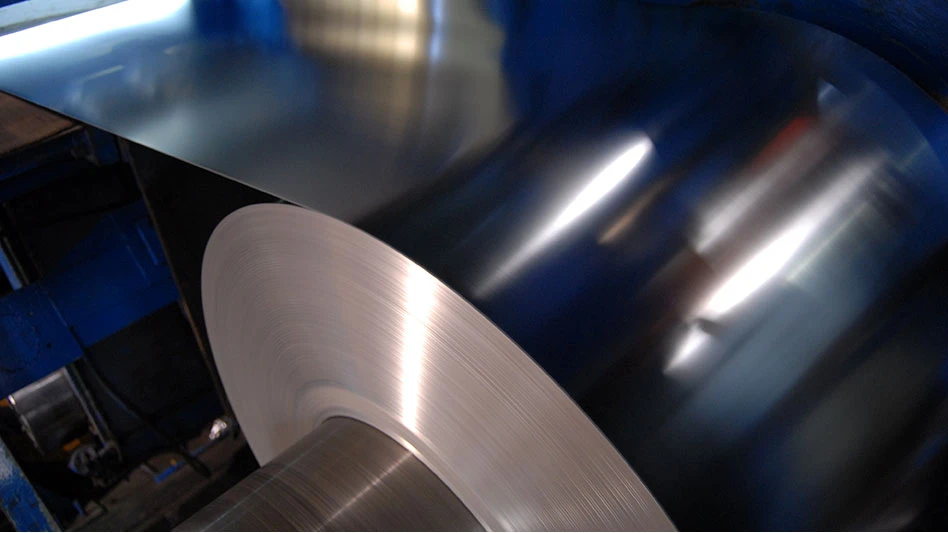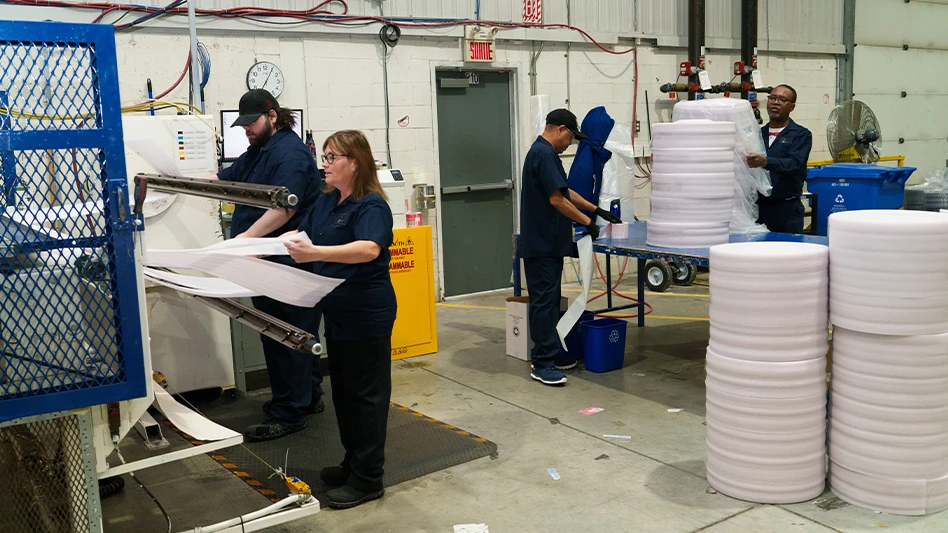The growth of the electric arc furnace (EAF) mini-mill segment of the North American steel industry has undoubtedly been a boon to the ferrous scrap industry. But mini-mill operators are paying increasing attention to alternative iron units and other processes and technologies that should ultimately make them less dependent on scrap metal.
Just how much of the EAF market share scrap substitutes or virgin iron products can snare is a subject of debate. But with scrap substitute options increasing, ferrous scrap may face an increasing amount of competition as feedstock for North American mini-mills.
A GROWING INDUSTRY
The well-documented boost to the scrap industry provided by the growth of EAF steelmaking has been matched by the growing production of alternative iron units.
Midrex Direct Reduction Corp., Charlotte, N.C., is the company with perhaps the largest presence in the scrap substitute industry. The firm tracks the production of direct reduced iron (DRI) made by both its own process and by those of competitors. According to Midrex, world DRI production has grown from five million metric tons in 1978 to more than 36 million metric tons in 1997. Much of that seven-fold growth has occurred in parts of the world that do not generate nearly as much scrap metal as North America, in regions such as Latin America, the Middle East and the developing nations of Asia.
In 1997, just less than two million tons of DRI were produced in the U.S. and Canada, though that number will increase for 1998 with the start-up of a British Steel DRI plant in Mobile, Ala.
Will additional North American DRI or HBI (hot briquetted iron) facilities soon be built to serve steel mini-mills? Midrex officials believe there are economic considerations that favor that possibility.
Speaking at a recent scrap industry conference sponsored by American Metal Market and New Steel, Frank Griscom of Midrex said the traditional scrap-steel pricing relationship has changed. “In the past, EAF steelmakers were not concerned about scrap prices. When they were high, steel product prices were even higher, and mills were very profitable. However, that relationship has changed, and scrap and steel prices now often move independently,” said Griscom.
While he noted two such examples from the past four years of this phenomenon, he would probably have a hard time convincing scrap dealers and processors in the current environment that their prices are not affected by events within the steel industry.
Nonetheless, many steel companies have seen enough logic in this argument to invest in alternative iron unit-making capacity. Nucor Corp., Charlotte, N.C., has operated an iron carbide production facility in Trinidad for several years, while Georgetown Steel Corp. was a pioneer in the segment, having operated a Midrex plant since the early 1970s. As noted earlier, the Tuscaloosa Steel Corp. subsidiary of British Steel began DRI production in late 1997. The company shipped a 20-year-old Midrex plant that was formerly located in Scotland to Mobile, Ala., where it was recommissioned.
Griscom also noted that foreign-made DRI and HBI has found its way into North American markets. “These sales have demonstrated that DRI and HBI . . . have a value equivalent to premium-grade scrap for mills making low residual steels such as wire rod, seamless tube, SBQ (special bar quality), and flat products.”
HOT NEWS IN THE MAKING
In addition to established DRI and HBI alternative iron units, there is a newer process on the horizon that may create further competition for scrap iron and steel. Several different companies are working on variations of furnaces and smelters that will produce liquid hot metal for electric arc furnaces. These “mini-smelters” may use iron ore pellets, iron ore fines or even steel mill residues like filter cake and mill scale.
The mini-smelters offer an economic advantage in an important cost category for all mini-mill operators: electricity. “Everything stays hot—there’s only one heating instead of two,” notes Dr. Richard Burlingame, a consulting metallurgist from Cleveland.
“The peak temperature reached in producing DRI (1900 to 2000 degrees F) is then immediately raised to the melting point of high-carbon iron (2500 to 2600 degrees F), all within the one or two reactors of the mini-smelter. Since the mini-smelter is right next door to the steel mill, the steelmaking EAF receives liquid hot metal for a portion of the charge. And because this liquid hot metal is produced with only one heating—not two, as with conventional cold DRI practice—the steelmaker benefits from a major cut in his electrical energy cost per ton of steel. At the same time, much faster heats (shorter tap-to-tap times) will be achieved, a second advantage which translates into significant cost savings,” adds Burlingame.
North Star Steel Co., Minneapolis, operates seven EAF mills in the U.S. The company is two years into an agreement it has with Tecnored of Brazil to bring the Tecnored iron smelting process to North America. “North Star and its development partners believe that a process like Tecnored can truly revolutionize the raw material equation for EAF steelmaking,” North Star Steel’s director of technology Anthony J. Hickl told attendees at the Ferrous Scrap/Metallics ’99 conference.
According to Hickl, the Tecnored process produces liquid pig iron in a hot blast smelter using either pellets made from iron ore fines or iron-bearing residues and carbon bearing fines such as petroleum coke, coal and charcoal. The metallic materials are mixed with fluxing and binding agents, pelletized and cured, and then charged into a smelter. The hot metal then goes directly to the steel mill.
As Burlingame indicated, energy savings is a motivating factor for North Star. “The biggest advantage is in the area of electrical savings,” says Jon Ruth, executive vice president of commercial activities for North Star. “Unlike with HBI or DRI or pig iron, here we’re direct-charging hot metal into the furnace and reducing our electrical costs significantly,” he adds.
North Star is examining not only bringing the Tecnored process to its own mills (starting with its Beaumont, Texas facility), but also marketing Tecnored to other steelmakers. “Looking beyond the first unit at Beaumont, we see a real opportunity within the electric steel industry to provide hot metal as an over- the-fence service to mills at selected locations throughout the country, not just North Star mills,” says Hickl.
The Tecnored process is not the only mini-smelter format on the horizon. Steel Dynamics Inc. (SDI), Butler, Ind., began operating its Iron Dynamics process in 1998. The process produces liquid pig iron from iron ore fines and steam coal. “This milestone project . . . could again revolutionize the mini-mill segment of the flat rolled steel industry,” SDI president Keith Busse has stated, adding that EAF mills “will have the option to integrate backwards on a favorable basis.”
In Australia, HIsmelt Corp., a Rio Tinto Group Company, is developing a line of various sized smelters to produce hot metal from iron ore fines, steel mill reverts, and non-coking coals, following extensive, successful testing in their research and development plant in Western Australia. “Some current [and future] EAF plants are . . . designed to accept at least 30% hot metal charge to capitalize on productivity benefits and—in the case of HIsmelt hot metal—lower operating costs,” says HIsmelt Corp.’s Steve Gull. “This will allow EAF plants to produce very low residual, low phosphorus steel grades for high quality flat product application, in particular,” he adds.
And Midrex is also offering and developing hot metal options for its steelmaking customers. The company has tested the conversion of sludges, mill scale and furnace dust into liquid iron in its Fastmet rotary hearth furnace. The company has been working in cooperation with Kobe Steel and National Recovery Systems to develop the Fastmelt and Fastmet projects.
THE ROLE OF LOGISTICS
Which steelmakers are using DRI and HBI, and why do some mills use more than others? North Star’s Hickl addressed those questions as far as his company’s operations during his presentation at the Ferrous Scrap Metallics ’99 conference.
“We have developed a market-based strategy to provide the lowest cost units for the product mix that we produce,” says Hickl. “The Beaumont, Texas site has considerable flexibility for sourcing iron units as the result of excellent logistics derived from being adjacent to the Port of Beaumont,” he noted.
At Beaumont, the company may use as much as 35% alternative iron units in a melt, though typically the percentage is lower.
At the other end of the spectrum is the Delta, Ohio mill that is operated by North Star in partnership with Australia’s BHP Steel. “North Star BHP probably uses one of the lowest percentages of virgin iron units,” says Hickl. “This is the result of Delta’s close proximity to the prime scrap markets of Detroit and northern Ohio and the relatively higher delivered prices for virgin iron units.”
Chemistry is another reason steelmakers cite for purchasing scrap substitutes. “We’ve got considerable experience using HBI and pig iron as a means of controlling residuals in our furnaces,” says North Star’s Ruth. “It is generally used at those facilities that have requirements for low residual scrap.” Company-wide at its seven mills, North Star uses “on average 12% to 15%” scrap substitutes on an annual basis, says Ruth.
Ruth adds that “keeping out copper and some of the other tramp elements that have effects on surface quality or machinability” are specific reasons to add iron units to certain melts and for some grades of steel. “The [tramp elements] are items that you can’t take out of the scrap, so you must dilute them by using more iron,” he remarks.
In addition to geography and chemistry, scrap pricing remains a factor in DRI and HBI usage. “The prime grades of scrap have come down significantly so that they are priced today slightly below pig iron prices,” says Ruth. “The prices are more competitive today than just six months ago. That has had a significant impact on what’s being used in the melts.”
CREATING A LOWER CEILING?
It is not universally agreed upon, but many scrap and steel industry insiders believe that there may be a market share “magic number” that will cause scrap substitutes to place a ceiling on scrap pricing.
Currently, the fluctuating price of scrap versus pig iron or iron ore is a part of the buying decision for steel mills. “Today, there is little HBI being used because of the low scrap pricing,” said Ruth in mid-December of 1998. “HBI is significantly more expensive to use in today’s markets. Pig iron is also cheaper,” he added.
Just six months earlier, much higher scrap prices were dictating different decisions for many steelmakers. The current situation means mills must constantly monitor three sets of prices and attempt to arrange shipments for the lowest price commodities.
But could the increasing availability of DRI at a price of around $105 per ton and the success of mini-smelters that can also produce liquid hot metals for around $110 per ton flatten the scrap price peaks that have occurred?
“There is a fundamental overcapacity of virgin iron materials,” says Ruth. “It will continue to put downward pressure on virgin iron prices.”
If that is correct, the DRI and mini-smelter prices should stay flat. Such stability (or flatness) may also make it difficult for scrap dealers to fetch $135 or $140 per ton prices. Is this bad news for those in the scrap industry?
“It’s bad news for scrap processors in the sense that there would always be some kind of ceiling established with these other technologies in place,” says Ruth. “It will limit their capacity to raise prices. But the stability is good for both the producer and the consumer,” he remarks.
If the mini-smelter technologies in particular are widely accepted, it would be hard to dispute that the potential market in terms of tonnage available to ferrous scrap sellers would be reduced.
“These mini-smelters will be much more of a threat to scrap sales than DRI, HBI or pig iron,” says Burlingame. “The economics and the technological benefits are so great. Someone who puts in this investment can use domestic iron ores, coals and waste oxides and end up making a liquid 100% metallics feed for the EAF. And the low tramp element content is always very attractive.”
This is not to say that scrap will be replaced, notes Burlingame. “Scrap is constantly being generated. It always will be. But if you put in a mini-smelter, you’ll find the price of scrap will drop around you—in your region. If scrap drops enough, consumers naturally will not ignore the low pricing.”
Thus, the scrap can be sold, but it may be against a newly-established, lower ceiling. It is a prospect that is increasingly discussed, but is still theoretical. There is also a more certain reality regarding the use of scrap substitutes and molten iron by mini-mills. Burlingame states bluntly regarding scrap substitutes: “I know that when a mill buys a ton of DRI or smelts a ton of liquid iron, they’re going to buy that much less scrap.”
The author is the editor of Recycling Today.

Explore the January 1999 Issue
Check out more from this issue and find your next story to read.
Latest from Recycling Today
- Nucor names new president
- DOE rare earths funding is open to recyclers
- Design for Recycling Resolution introduced
- PetStar PET recycling plant expands
- Iron Bull addresses scrap handling needs with custom hoppers
- REgroup, CP Group to build advanced MRF in Nova Scotia
- Oregon county expands options for hard-to-recycling items
- Flexible plastic packaging initiative launches in Canada
